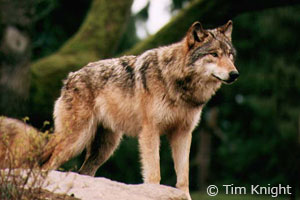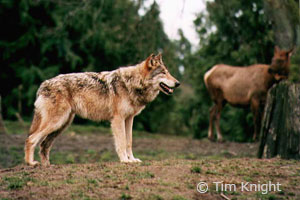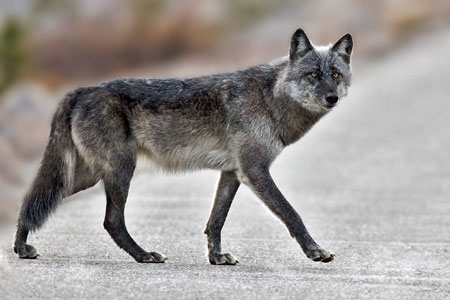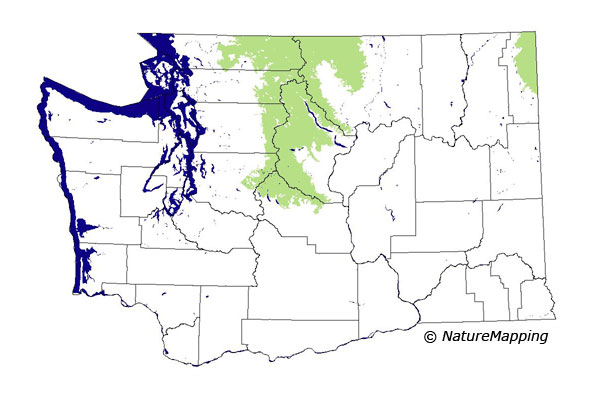
NatureMapping Animal Facts for Kids
Gray Wolf
|
Gray Wolf (Canis lupus)
Weight: Height: 26 to 32 inches
Length: 
Where they live: Click the range map to learn more about the distribution of Gray wolves in Washington. What they eat: Gray wolves are carnivorous -- they primarily eat meat. Wolves often hunt in packs for large prey such as deer, moose, sheep, goats, caribou, elk, bison, and muskox. Wolves also prey on rodents, beavers, fish, and birds. 
Behavior: Gray wolves are territorial and live in packs lead by the alpha pair. A pack of 6 to 8 wolves includes some of the alpha pair's offspring and may include some unrelated wolves. Gray wolves communicate with each other through howling, body language and scent. Howling is used to assemble the pack, communicate with other packs, and assert territorial boundaries. Reproduction: Gray wolves mate between late January and March. Once the female chooses a partner, the animals may remain paired for a number of years. Litter size ranges from 4-6 pups. They usually breed once each year. How long they live: Gray wolves have been known to live a maximum of thirteen years in the wild, though the average lifespan is about 5 to 9 years. They can live 14-15 years in captivity.
Did you know?
 Wolf in Jasper National Park, Alberta, Canada (courtesy of Natures Pics) Animal silhouettes available to purchase »
More information:
Photo Credits: Tim Knight (top), Natures Pics (bottom) |
